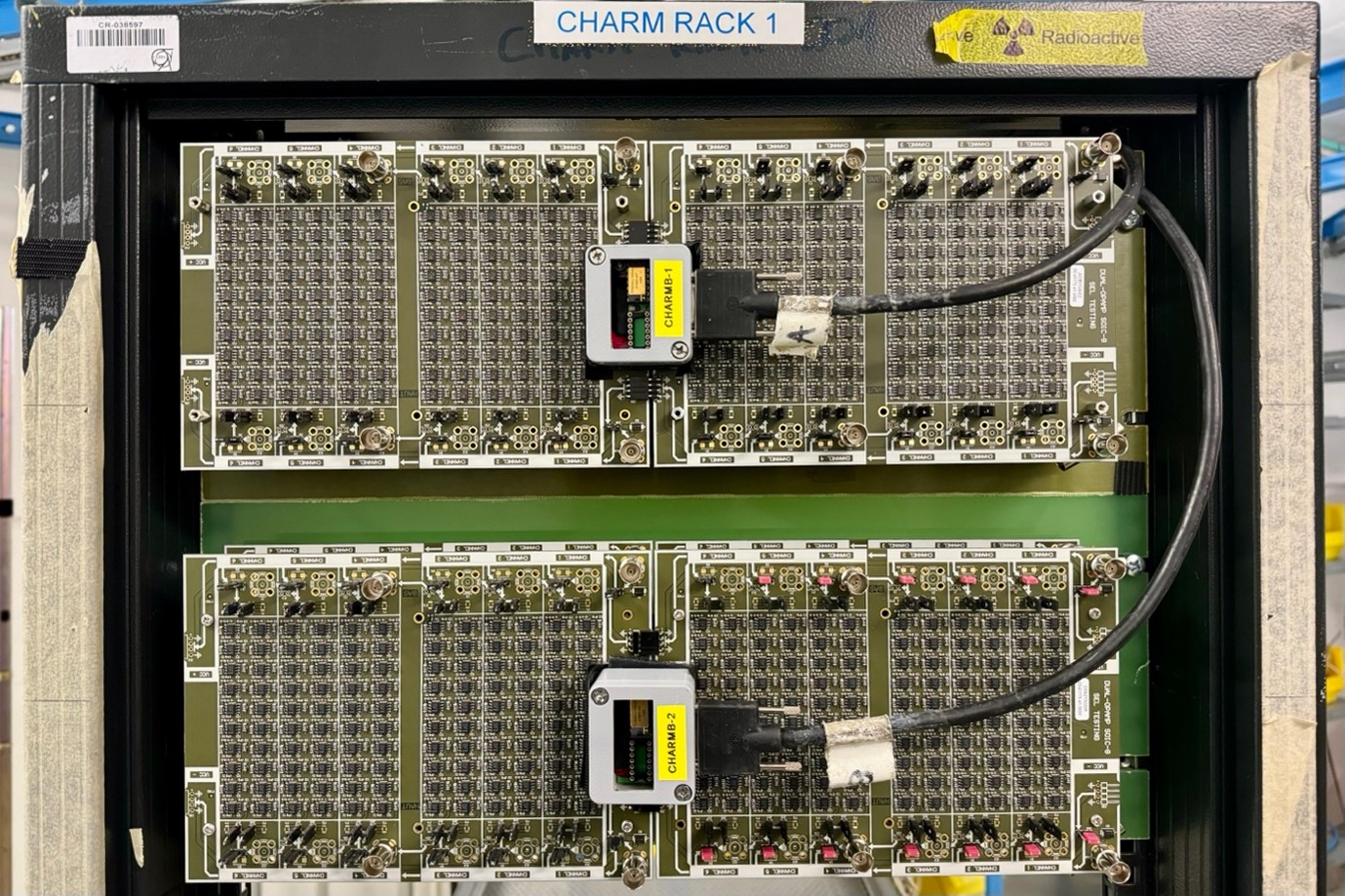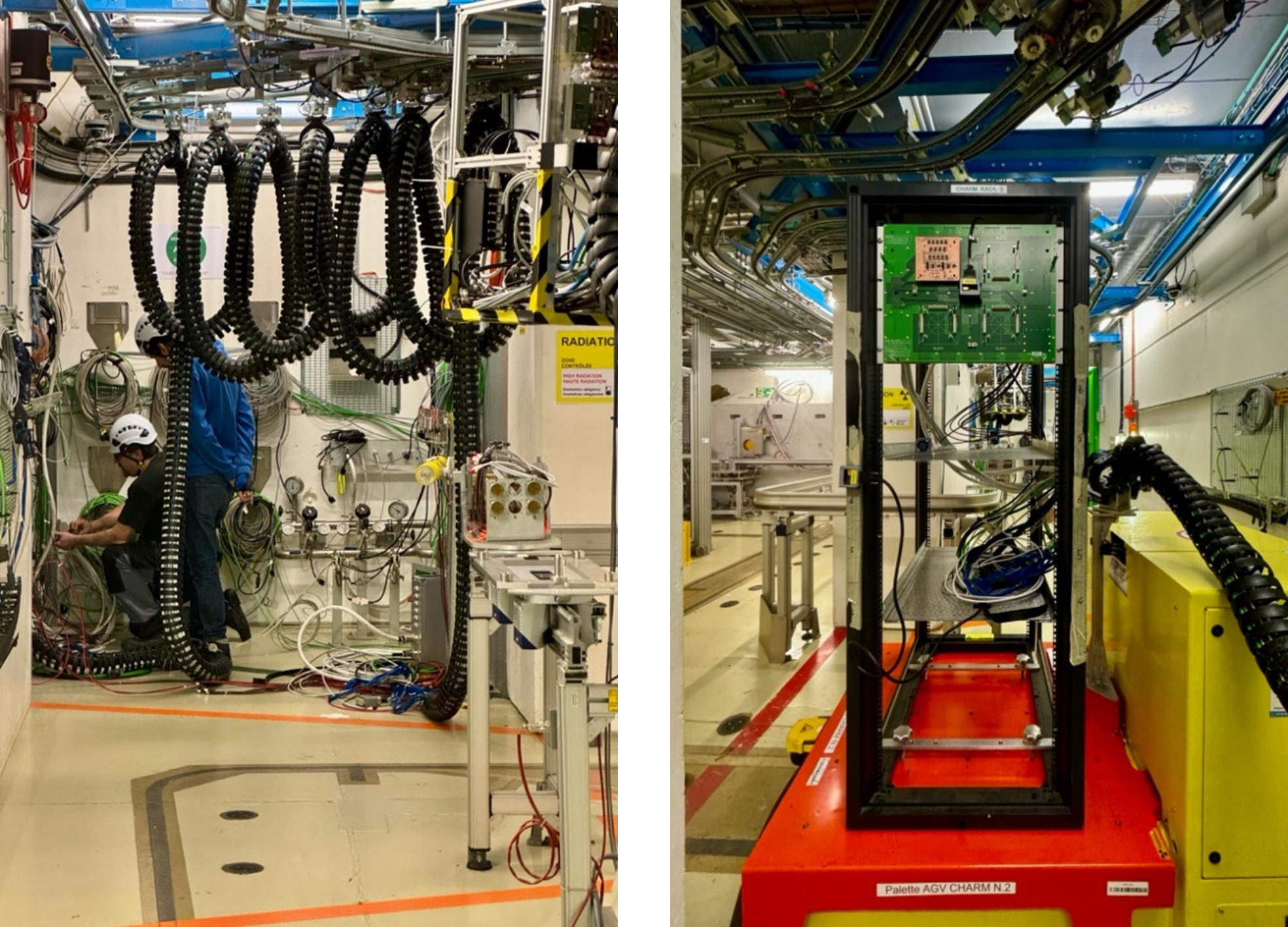The injector complex restarted operations for 2024 this March, with first beams available to East Area on the 18th. CHARM facility and its team were eagerly waiting for that: first days of beams in T8 line have been exploited to understand the effect of specific beam steering operations on the mixed field generated by CHARM target. Thanks to the collaboration with our BE-OP-PS colleagues, intensity profile features of the mixed field in time have been correlated with beam momentum distribution at the extraction, with extraction timing and spill length. Such knowledge will be of great use for the operation of CHARM facility, and to provide feedback to the operators.

Figure 1: working with BE-OP colleagues in CCC to the optimisation of the T8 beam extraction
Moreover, from 2024 CHARM benefits from a higher intensity extracted beam in T8 line. Thanks to the common efforts of BE, PH, HSE and SY departments, a thorough study of the possibility to increase the T8 line intensity from 6E11 to 8E11 protons per spill has been conducted in 2023. Beam instrumentation properties, beam extraction parameters, target thermo-mechanical properties and residual activation of the zone have been verified to be adequate to such an increase of intensity, thanks also to operational tests conducted in late 2023. A new ECR document has been prepared and approved, so that starting from 2024 CHARM will deliver to its users more intense radiation fields, allowing to reach their goals in smaller time.
Once beam steering operations were completed, next step has been the commissioning of the CHARM facility: this is a routine beginning-of-the-year exercise that consists in the characterization of the irradiation positions to be used in 2024. For that purpose, RADMON devices identical to those deployed all around the accelerator complex are used: these can measure meaningful dosimetric quantities for electronics, such as Total Ionising Dose (TID), as well as High-Energy Hadron (HEH), 1-MeV-equivalent-neutron (1MeVeq) and Thermal Neutron (ThN) fluences. Protons-to-fluence calibration factors are calculated for each test position and will be used throughout the year to calculate the values cumulated by each individual CHARM user. This is achieved without the need to use full RADMON devices each week: device dimensions and its radiation tolerance would not allow for them to coexist with user setup along a test week.
For TID and 1MeVeq instead, individual, on-line, and time-wise dosimetry are provided to each user by exploiting RADMON’s deported modules: these smaller devices host a RADFET sensor for TID, and PIN diodes for displacement damage measurement. These have a higher resistance to radiation and can withstand several weeks of testing without performance degradation.
Once the commissioning campaign terminated on Tuesday 26th, CHARM hosted its first test setup for 2024: a massive component-level test for an LHC power module by SY-EPC. In this test, 480 operational amplifiers of 4 different kinds, selected among a single lot per kind, were tested together for single event latchups, a specific class of instantaneous, stochastic effects due to radiation. This method allows the Radiation Electronics Test Service of the Electronics Production and Radiation Tolerance (EPR) section to measure the failure cross-sections of the components, when these are expected to be very small (of the order of 10-15 cm2/device). By compensating the low observability of such effects with high statistics in terms of Devices Under Test (DUT), accurate values can be obtained from the test, that can effectively support part/lot validation for their use in CERN accelerator complex.

Figure 2: high-density, high-statistics components test setup by BE-CEM-EPR
After Easter, more users came to CHARM with their setups: after having completed the required dry run in CHARM preparation room since the previous week, colleagues from ATLAS and from SY department installed their setups both in the CHARM rack, and in the Overhead conveyor. The latter is a support for user setups, independent from the rack, that moves on rails and allows positioning 19” standard chassis in several irradiation positions in CHARM.

Figure 3: Wednesday routine work in CHARM facility. Preparing connections on the patch panels (left) and test rack ready to reach irradiation position on the AGV conveyor (right).
CHARM operations are now in full swing: 43 users are already scheduled, often for more than one week, plus the weekly tests for BE-CEM-EPR radiation testing service. 35 weeks of continuous operations are foreseen in 2024, up to November thanks to the extended run of the Injectors.
Looking forward to a challenging year of testing in CHARM, fulfilling its users’ needs and, in turn, ensuring safer and reliable operation for CERN accelerator complex electronics.
